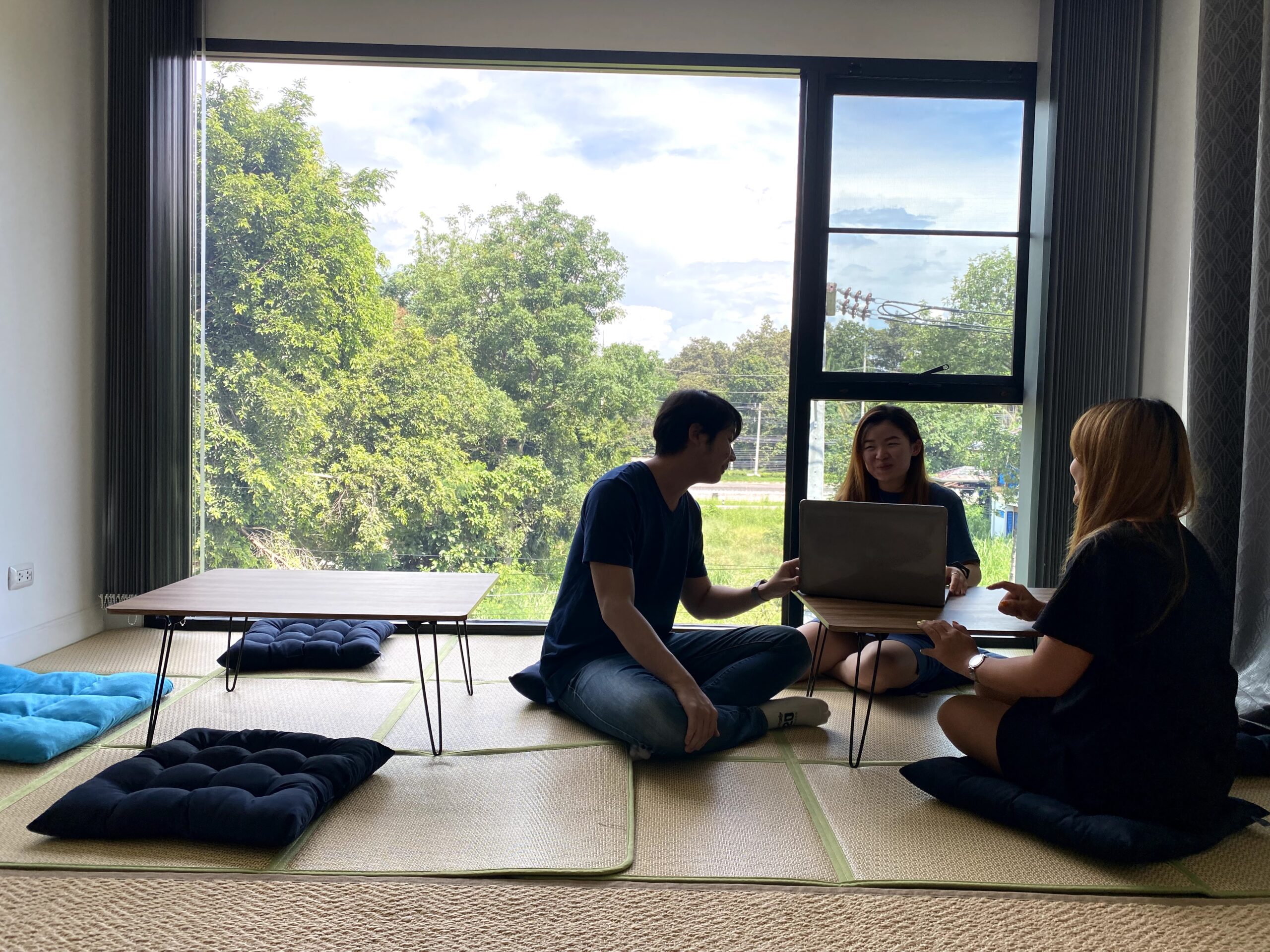A quick introduction about myself. Five years ago, I’ve made a big decision to move to Thailand from Vietnam, my home country. I had the chance to meet and work with Simon, CEO, and Co-founder of Simya, and Khwan, Co-founder of Simya, with the very first app that we made at Simya: Simply Learn Languages App. This is the first time I work in the IT field and it was a bumpy road at first. But till now, after many years of learning and working as a Project Manager for multiple projects at Simya, I’ve learned a lot about Project Management and I would like to share with you what I’ve learned and been practicing regularly here.
If you’re a Project manager, you probably have experienced running multiple projects at the same time at some points in your career, and it’s the same for me. I started with one project at a time, then came the opportunities, and we started to run multiple projects simultaneously. I’m often asked, “How do you manage multiple projects at the same time?”. To be honest, there’re so many answers to that question and there are so many things that can go wrong easily and fast while doing it. But there are some practices that I found that worked well for me throughout the time and here they are:
Planning is important
You can not start a project without planning, this is a very important step that needs to be done and carefully reviewed and approved by your CEO.
- Create a detailed roadmap for each project (If you run a dedicated team for each project), it can be weekly or monthly.
- Be crystal clear about what to do, and have a rough plan for how you will achieve it.
- Each one of your team members should know this plan by heart to make sure everyone is on the same task list page.
- And don’t forget to create a schedule to track these milestones.
We have OKRs (Objectives and Key Results) meeting every quarter at Simya. We first define our company goals to achieve for the next 3 months, then each team will define their own goals with the roadmap to finish these goals based on the company goals. By doing this, everyone agrees on what needs to be done and commits to finishing. The goals should be realistic and doable, using statistics to analyze and define.

Divide your time of the day
To be able to manage your time effectively, you need to know what’s the priority. There are many ways to find out, but the rule of thumb is to focus on the project that has the most impact on your company goals more. Ideally, you should know how many hours of the day you need to work on each project and follow that strictly. But, there will always be some time that the development process is not that busy (For all projects, it’s usually busy at the start and toward the end of the phase), you will then need to swift your focus on the other project instead. If you can not track the time by yourself, there’re many tracking tools out there that can help you, try out some and find the one that suits you the best.
Same process for all projects
In my case, since all of the projects that I manage have the same type of product, so I can apply the same management methodology for all of them. This helps me to not lose track of what I need to do next in each project or get mixed up, it became something I need to do every day and never forget. For example: If I need to release the app, I will set it to release every 2 weeks for all projects. If you can’t apply the same process, try to make it as similar as possible.
Communicate with your team regularly
While keeping your workloads balanced and keep track of what’s going on in each project, it’s important to check in with your team members regularly. Build up a two-way feedback channel to make sure everyone is on the same page and the assigned tasks are clear. In the end, it takes a team effort to finish what you plan.
In Simya, we have bi-weekly meetings and daily standups. The daily standup meeting is a short meeting before we start to work, where everyone can give a short update on their progress and their plan for that day, they can also ask for help with some matters from other members. The bi-weekly meeting helps us to review what we have finished, praise for our achievement, and plan for what comes next, every single member has an important role in this meeting.

Managing expectations
There are always risks that something might go wrong during the development time, and it might affect the expectations that people have on you. Your job is to keep your CEO or Supervisor up-to-date when something goes wrong or the milestones are not met and why. The sooner they know the better, and also prepare a plan on how you can get things back on track. Everyone likes someone who comes to the meeting with preparation and solutions.
No one says it’s easy to manage multiple projects at the same time, there are ups and downs, but for me, it became something that I feel excited about and very proud of. I’ve gained so much experience, exposed myself to many difficult situations, and found my way out of it. I hope this article provides some helpful information, and if you have any tips that you want to share about this topic or any other related topics, I’m happy to hear from you, let’s have a chat! :).


































































